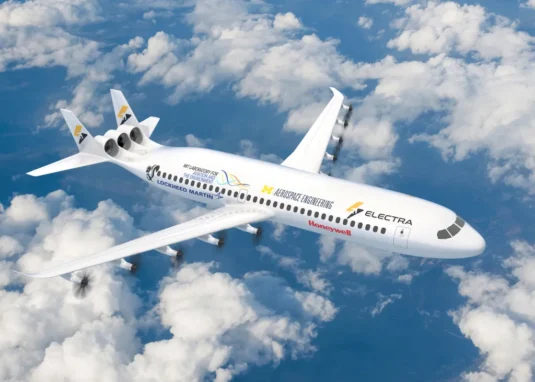NASA has awarded Electra a significant contract to develop key technologies and aircraft concepts for next-generation commercial airliners. The Advanced Aircraft Concepts for Environmental Sustainability (AACES) 2050 initiative is part of the broader effort to reinforce U.S. leadership in the decarbonization of aviation.
What is AACES 2050?
AACES-2050 is an industry-academia collaboration to study the suitable aircraft concepts and technologies to provide a ground-breaking solution to achieve a sustainable future of commercial aviation by 2050. With five total awards worth $11.5 million to four companies and one university.
AACES 2050 falls under NASA’s Advanced Air Transport Technology project, dedicated to exploring and developing technology to fulfill NASA’s vision for future fixed-wing transport aircraft with revolutionary energy efficiency. This project is part of NASA’s Advanced Air Vehicles Program, tasked with evaluating and developing technologies for new aircraft systems and exploring promising air travel concepts.
“Being selected by NASA for AACES is an important achievement for Electro,” says Dr. Uranga, Electra’s chief engineer for research and future concepts, who is also on the faculty of USC’s Aerospace and Mechanical Engineering Department and previously co-led a NASA N+3 program while at MIT.

Electra’s Role in Sustainable Aviation
Since founded in 2020, Electra is a pioneer in sustainable aviation technologies and has already made significant strides. The company developed a 150 kW hybrid-electric aircraft propulsion system in 2021 and began flight testing in 2023 aboard their two-passenger ultra-short prototype aircraft. This prototype incorporates novel aerodynamic designs and distributed hybrid-electric propulsion to achieve a short takeoff and landing (eSTOL) within a distance of 150 feet. ( See ELECTRA’s STOL with Promising Capabilities)
Electra is now focused on developing a nine-passenger version for passenger and cargo service, slated for introduction later this decade. To date, the company has reported over 2,000 aircraft orders from 52 customers.
With AACES 2050 design proposal, the Electra-led team is set to push the boundaries of distributed electric propulsion and their unique aerodynamic design capabilities. The proposed configuration has a swept wing of a high-subsonic/transonic airliner with ten distributed electric propellers and three ducted jets at the tail of the aircraft. This innovative wing and wide-body fuselage prioritize sustainable aviation, emphasizing community-friendly emission reductions, noise reduction, and better air travel access.

